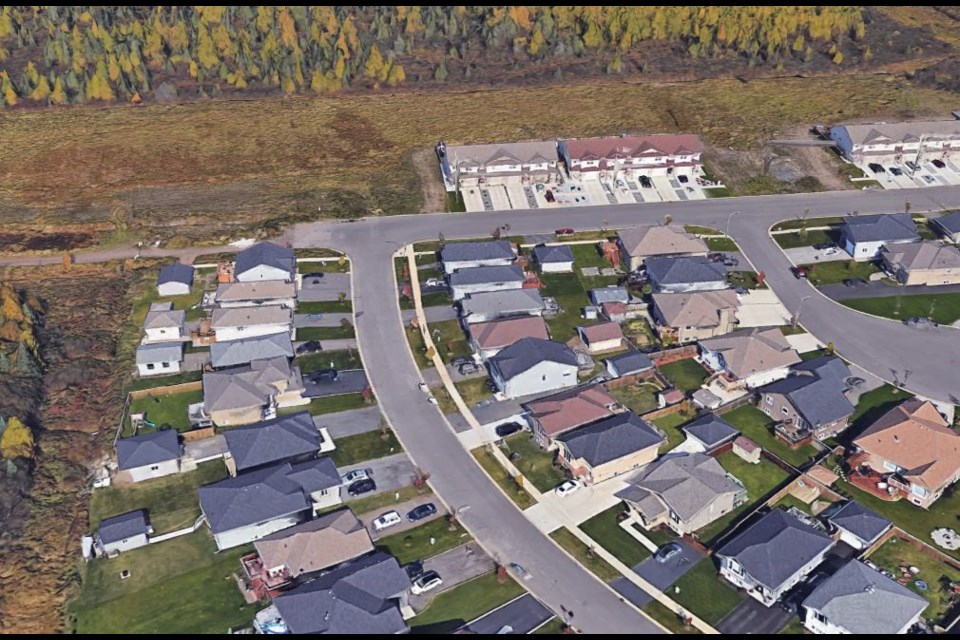THUNDER BAY – The City of Thunder Bay is preparing to spend up to $400,000 on a study to solidify development plans for the Parkdale area, located west and north of the Thunder Bay Airport.
City councillors debated Monday whether extending infrastructure like sewer lines and roads into the area would be good planning, but unanimously agreed it was worth undertaking the major planning study in an attempt to answer that question.
Councillors voted to add $180,000 to the draft 2022 budget for a Parkdale Growth Area Secondary Plan study, which would be combined with previously budgeted funds to support the exercise.
The recommendation to carry out the study was made by city administration in response to a request from developer Nadin Construction to extend a trunk sewer line by around three kilometres to reach a proposed subdivision just east of Maplewood Estates, off of Mapleward Road, which they also developed.
The local company told the city earlier this year it’s prepared to spend millions to cover the costs of a sewer line large enough to support the development.
New development in the Parkdale growth area can only proceed on city sewer services, thanks to a 2017 Ontario Municipal Board settlement reached after the province objected to Maplewood Estates being built using private septic fields.
The trunk line itself would likely take at least five years to come to fruition, with plans for the subdivision moving ahead after that, the Nadins have said.
The city would be left to maintain the asset, and staff said Monday it would also need to pay around $1.1 million to “oversize” the trunk line to accommodate other future development in the area. The city would also need to acquire property or easement rights from around 17 property owners along the sewer line route.
The decision is about a lot more than a sewer line, city staff said. Supporting the development of Parkdale would represent a “progression of the urban fabric in a westward direction,” said director of planning Leslie McEachern, requiring the city to make decisions about road location, transit servicing, and more.
A secondary plan would take about a year to complete and require an amendment to the city's official plan, sketching out development policies specific to the Parkdale area.
Coun. Shelby Ch’ng was one of several councillors to voice hesitance over the request, saying previous decisions to add city services for developments on the edges of the city had proven to be costly mistakes.
“We need to densify, and stretching out is I think the wrong way to go,” she said. “However, I do see that this particular piece of property has potential. I’d like to see what that potential is, understanding that I might not necessarily agree with the plan.”
Coun. Andrew Foulds agreed, worrying the city could spend millions to service Parkdale without enough homes built to justify the investment
“[What if] the properties at the very end of this ends up getting developed into residential, and nothing in the middle ends up happening for another 20 years… developers don’t take it up, and it becomes extraordinarily expensive to service these properties?” he asked.
“There’s definitely a risk the lands in between won’t get developed, but there’s also an opportunity” to infill the area, said senior planner Decio Lopes.
Coun. Aldo Ruberto said adding services would help densify the area and help better connect it to the rest of the city, saying he saw a need for more housing supply.
Mayor Bill Mauro questioned that assertion, saying estimates that a mining boom would require hundreds more homes to be built were speculative and long-term.
The city already maintains at least a 10-year supply of developable lots, staff reported.
The budget allocation for the secondary plan will still be subject to debate as council deliberates on the 2022 budget in January and February.
